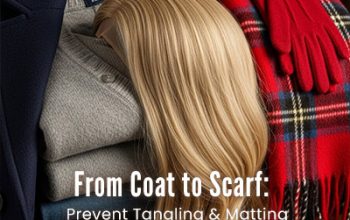
Overview
Real human hair wigs look more like natural hair, you can style your real human hair wigs in many ways more easily and quickly than synthetic hair wigs. Since human hair wigs can be styled to vary with different hair textures, they include styles for both silky straight, curly, and wavy hair. Reading this article, you will be able to find out how the master adds variations in the texture and other features of real human hair wigs, as well as, identify the features which make them so special for those customers who appreciate quality and originality.
Introduction:
When it comes to wearing wigs and making them look real and natural then it can only be real human hair wigs. Compared with other synthetic wigs, these wigs offer a reasonable look and feel very much like natural hair. If well maintained and properly styled, they allow the wearer to wear whatever hairstyle they desire at that particular time. But before addressing these thoughts, let’s start by asking a few questions: What are human hair wigs and how can you produce the various textures that convey the flexibility and appeal of these kinds of wigs?
What are Human Hair Wigs?
They are made from 100% real human hair that is sourced from donor hair and processed from individuals who willingly donate it. This makes the wigs to be as natural looking as possible and people who want to wear the wigs desire natural looking and textured wigs. The hair employed in these wigs does not lose its natural characteristics but rather remains as soft and shiny as well as has a natural-moving pattern as one’s hair.
How are Human Hair Wigs Made?
To manufacture a real human hair wig, the hair must first be obtained, and it is usually gathered in a strategic manner, then cleaned and separated. The hair is then processed to ensure that its cuticle layer is intact and aligned to avoid hair tangling and also to enhance the natural hair shine. The strands are then sown on the wig cap, and this cap can be made from different materials like lace, monofilament, and polyurethane among others. This cap forms the basis of the wig since it is designed to sit on the head of the wearer perfectly and firmly.
Real human hair wigs can also be processed in many ways to achieve the required color, length, and texture. The quality of the hair is maintained throughout all these processes, which is why the output is strong, silky, and easy to manage.
Why are Human Hair Wigs Expensive?
The following are the reasons that can explain why human hair wigs are more expensive than synthetic hair wigs. For one, the source of hair is selective in that human hair is sourced through time and involves a lot of work. In this stage, the hair has to be collected, cleaned and processed carefully in a manner that preserves as many of the hairs’ qualities as possible. Also, the workmanship of the actual making of a wig from human hair coupled with the capability to market such a product on the market. Every wig that is made is hand-stitched and a lot of care is taken to make sure that the hair falls in the right manner and that the wig is fitting correctly.
Also, human hair wigs are more durable than synthetic hair wigs and therefore anyone who is planning to enjoy the service of a wig for a longer time will find saliva worthy to invest in. The possibility to work with these wigs with heat tools just like real hair provides extra bonus, but the hair has to be of the best quality possible in order to stand those treatments without harms.
How to Achieve Different Textures with Human Hair Wigs?
One significant advantage of real human hair wigs is their versatility in styling. With the right techniques and tools, different textures, whether straight, wavy, or curly, can be achieved.
Straight Texture:
To achieve a sleek, straight look, a flat iron is your best friend. Start by washing and conditioning the wig to ensure it is clean and tangle-free. Apply a heat protectant spray to prevent damage from the flat iron. Section the hair and run the flat iron through each section from root to tip, ensuring even heat distribution. This method will give you a smooth, polished finish that can last until the next wash.

Wavy Texture:
To give a more relaxed, summery look, one may use a curling iron or wand. If the wig has a lot of layers and the hair is long, then use a styling mousse or texturizing spray so that it will not fall flat, especially after washing or drying the wig. Section parts of the hair and wrap around the barrel of the curling iron and hold for some few seconds then let go. After you’ve curled all the sections, obscure the curls using your fingertips so that you’ll get soft waves on your hair. To give the appearance that curls are natural, it is recommended to have them done in different directions.
Curly Texture:
Achieving tight curls or ringlets requires a smaller curling iron or flexi rods. Begin by washing the wig and applying a curl-enhancing cream to damp hair. For heat-styling, wrap small sections of hair around a thin curling iron, hold, and release. Alternatively, use flexi rods on damp hair, leaving them in until the hair is completely dry. After removing the rods, separate the curls with your fingers to add volume and bounce.
Voluminous Texture:
Blow-drying and backcombing can be used together to give the wig more volume and body. Begin by blow-drying your hair upside down to raise the roots. Once dry, take sections of hair and carefully backcomb the roots with a fine-tooth comb. Smooth the top layer of hair over the backcombed areas to cover them. This method is ideal for creating a big, voluminous look that will last all day.
Textured Waves and Curls:
For a more defined texture, consider using a combination of twisting and braiding techniques. On damp hair, separate the wig into parts and twist or braid each one. Allow your hair to air dry or use a blow dryer with a diffuser attachment. Once dried, undo the twists or braids to reveal gorgeously textured waves or curls. This procedure is great for folks who want a more natural, lived-in appearance.
How Do You Maintain Texture Wigs?
- Ensure the texture of your wig lasts, and always start with clean, conditioned hair.
- Use styling products specifically designed for human hair wigs to enhance and hold the texture.
- Avoid over-styling with heat tools, as this can cause damage over time.
- When not in use, store the wig on a wig stand to maintain its shape and prevent tangling.
Conclusion
The use of real human hair wigs makes it easy to create different trendy looks and textures as compared to synthetic hair. From straight neat cuts or straighter looks to gorgeous waves or tight curls you get with wigs of human hair you can style them however you like. Many of these textures can only be produced and sustained with the appropriate tools and methods, as well as adequate maintenance. To achieve the specific look you want, the human hair wig may be restyled to suit your preferences, making it suitable for versatility in terms of fashion.


